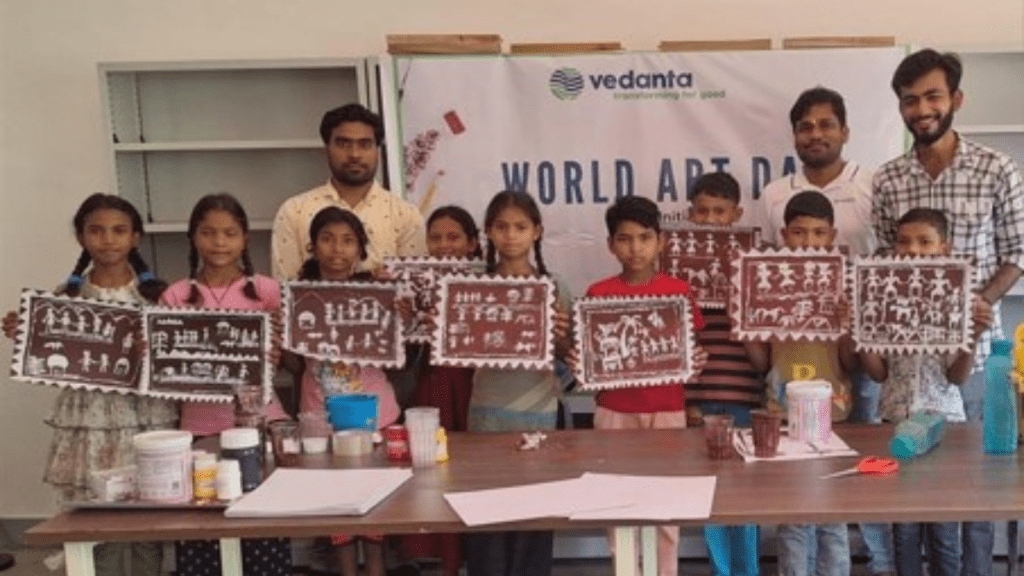With traditional art forms struggling to retain visibility in rapidly changing social landscapes, companies are increasingly using community initiatives to connect younger generations with regional cultural practices. On World Art Day, Vedanta—India’s largest aluminium producer—organised a workshop on Saura art in Thuamul Rampur, Kalahandi district, Odisha, as part of its community engagement efforts.
Conducted at the Eklavya Model Residential School, the workshop introduced over 120 students to the techniques and cultural significance of Saura art. Faculty from the Kalahandi College of Art and Research led the session, which focused on familiarising students with the tribal art’s motifs, history, and symbolism.
Saura art, rooted in the traditions of Odisha’s Saura tribe, is known for its geometric forms and depiction of daily life and folklore. However, like many indigenous art forms, it has been seeing reduced practice and transmission, particularly among younger communities. The workshop was designed to create exposure through direct participation rather than passive learning.
Vedanta stated the initiative is part of its wider CSR approach in Kalahandi, where it operates development programmes across 67 villages. These include interventions in education, healthcare, infrastructure, and livelihoods, reportedly reaching over 1.5 lakh people.
The intersection of CSR and cultural preservation is growing, particularly in areas where industrial operations exist alongside tribal populations. While not a substitute for formal preservation efforts, these programmes allow companies to support local heritage through education-focused models.
As policy and institutional frameworks for preserving tribal culture remain limited, CSR-driven models are filling in some of the gaps—at least in terms of awareness and early engagement. In regions like Kalahandi, where cultural knowledge often remains within oral or community-specific traditions, such efforts may help sustain interest in practices that otherwise risk being left behind.

